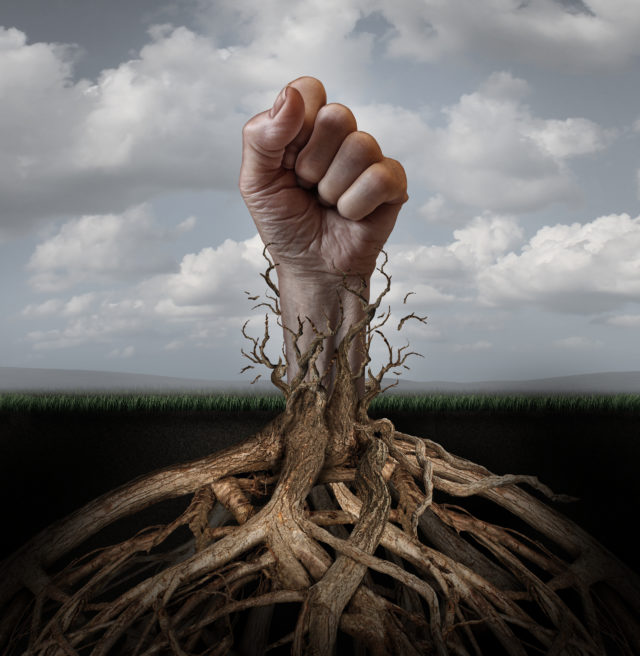
If you live in Boulder County, you’ve probably heard the story of Zayd Atkinson and John Smyly. On March 1, 2019, Atkinson, a Naropa University student, was picking up trash outside his apartment complex, when Smyly, then a Boulder PD officer, stopped and began asking questions. The next several minutes were tense, all caught on the officer’s body cam, as it became increasingly clear that Smyly, who is white, considered Atkinson, who is black, a threat, eventually calling for backup and even drawing a weapon.
The community outrage was swift, as was the City’s response. Smyly resigned soon after, officials condemning his actions, saying he didn’t follow protocol. Although, he did stay on payroll until January to account for staff accrued paid leave and left with severance. Subsequent news reports followed City Council’s plan to adopt a new civilian oversight model for the police department, and a $125,000 settlement awarded to Atkinson, with little mention of Smyly.
That is until September, when the NAACP Boulder County branch uncovered that the Boulder County Sheriff’s Office had hired Smyly for a civilian tech support role in January. The organization was quick to call the situation problematic, quicker still to applaud Smyly’s second forced resignation from a law enforcement agency in as many years — but not without offering to “work with Mr. Smyly using a ‘healing justice’ model that is similar to ‘restorative justice,’” according to a press release.
Healing justice is an increasingly used term in the cultural vernacular of not just criminal justice reform efforts but also in Southern racial justice movements, where it has its roots. But what exactly is it?
“I’m not sure there’s any one definition of it,” says G. Scott Brown, chair of the NAACP Boulder County Healing Justice Working Group, who also runs Active Peace Circles, a community process based in restorative justice practices. “When I think of healing justice, I think of a big umbrella, and my Active Peace Circle is just one thing. [But it all] has in common [the idea] that we have to change the system, we have to recognize that there are beliefs and assumptions that go into these repetitious patterns of harm and abuse, and we have to do our utmost to break those cycles because it’s killing people and it’s killing us as a society.“
If healing justice is an umbrella, then the Kindred Southern Healing Justice Collective, along with its cofounder Cara Page, is the manufacturer.
In the early 2000s, Page says, a lot of organizers in the areas of racial, gender, LGBTQ, reproductive and environmental justice in the South were experiencing burnout — depression, grief and loss — from heightened anti-black racism and anti-immigrant, homophobic and Islamophobic violence that was increasing during the Bush presidency, especially after 9/11. “And of course, now that’s accelerated in this current administration,” she adds.
Then in 2005 came hurricanes Katrina and Rita, which hit the Gulf Coast and exposed what a Kindred post on Medium calls “the callous abandonment of people” by the state.
So the Kindred Collective shaped a political framework — building off a lineage of black, indigenous and people of color movements — that seeks collective liberation by addressing collective trauma resulting from generational state and community violence. Healing is achieved by focusing on the psychic, emotional, physical, spiritual, mental and environmental wellbeing of the whole community.
“We’re talking about building power,” Page says. “It’s looking at modalities of healing but also shifting the paradigm of what it means to build infrastructure for care and safety as a political strategy for change.”
Rooted in black feminism ideology, Kindred’s healing justice is anti-capitalist and anti-fascist. And it’s rooted in transformative justice, a philosophy that responds to violence, harm and abuse without perpetuating more violence or reliance on state systems and institutions. Rather it cultivates “healing, accountability, resilience, and safety for all involved,” Mia Mingus writes at transformharm.org. Transformative justice, like Kindred’s healing justice, views the world through an abolitionist lens, calling for an end to institutions and systems that Page says are “inherently racist, classist, ableist, homophobic and transphobic.”
“We’re talking about building infrastructure for collective care and safety that does not rely on the systems that exist because they have not been useful to us,” she explains, which includes not just the criminal justice system driven by the prison industrial complex, but also the health care system, driven by the medical industrial complex.
Kindred began by sending integrative care units, a combination of wellness teams and health practitioners, to pro-racial and -migrant justice rallies, which were met with counter demonstrations in the Southeast especially. The collective also worked with organizers on large campaigns, like those who desperately tried to prevent the execution of Troy Davis, a Georgia man who many say was wrongfully convicted for killing an off-duty police officer. Ultimately, he was executed by lethal injection, and Kindred “came in to hold collective grief and trauma for the organizers in that space,” Page says. Kindred is currently working to both shut down the Irwin Detention Center in rural Georgia as well as provide care and community support for immigrants currently held there, many of whom report horrible conditions, medical neglect and, recently, forced sterilizations that made national headlines.
As Yolo Akili Robinson, founder of BEAM (Black Emotional and Mental Health), recently told Bon Appétit: “Healing justice really says we must reimagine the world.”
While Kindred created the framework, other political organizers have begun adapting this concept of healing justice into their work as well.
Black Lives Matter uses it in its organizing work against systemic oppression, declaring that creating spaces for healers within activist communities will “continue to be essential to how we sustain ourselves and how we create new ways of being along the way,” according to a toolkit from the BLM Healing Justice Working Group.
Not all healing justice work operates within the same context as the Kindred Collective, however. In recent years, the concept has continued to morph, making its way into criminal justice reform efforts and expanding restorative justice practices.
“The goals are the same, which is to identify the different ways or maybe the similar ways that people were hurt and then to identify how do they move forward both individually and collectively,” says Katie Monroe, executive director of the Healing Justice nonprofit, founded five years ago to address the collective harm caused by wrongful convictions.
The organization hosts retreats for crime victims with their families and exonerated individuals and their families, creating a space for all to share and heal together. Law enforcement and prosecutors are also invited into these conversations, but Monroe says they “haven’t found anyone willing to do it yet.” Healing Justice also holds listening sessions to allow the same people to share their stories in front of policy makers and justice officials in a safe space where “their experiences are honored and not challenged in any way,” Monroe says: “Both the listeners and the storytellers feel changed by that.”
But unlike the Kindred Collective and other social movements that use its healing justice framework, seeking to upend the current system and replace it, Monroe’s nonprofit hopes to bring reform and change by working within the current system. It’s more aligned with the practice of restorative justice, which works to repair harm caused by crime without the punitive measures served by a traditional court process.
In Boulder County, Brown’s Active Peace methodology blends all of this into a process that seeks to address the underlying white supremacy that informs all of our current system. But it does so within the framework of restorative justice, implementing the principles Brown has used for years working with both the Boulder County Sheriff’s Office and Longmont Community Justice Partnership.
“The way I approach healing justice is very consistent with restorative justice, albeit it goes deeper; it’s community-led, it’s community-initiated, it’s not systems-led or systems-initiated,” he says.
The process focuses initially on a specific incident.
“We unpack what happened, what the harm is, and do our best to repair/hear that harm,” Brown says. “In the process we address the deeper underlying root causes and do what we can to break patterns of harm, abuse and violence. So it starts quite specific, but unfolds (depending on the incident) to include systemic issues such as organizational and cultural beliefs, assumptions and patterns. In the end, I hope it will prove to be a way to serve racial healing writ large.”
And this is what’s being proposed to former Boulder PD officer Smyly, although he has yet to accept the NAACP’s offer, Brown says. If he does, Brown doesn’t have any preconceived plan about how exactly the process will go, or what the outcome will be. But that’s not the point, he says. The goal is to allow people to “come together to speak in a deep, uninterrupted, from-the-heart-kind-of way.” Only then can individual and collective healing begin.
“If we’re going to deal with something like police violence and racial profiling, it’s going to be deep, challenging work. We’re going to have to be very creative, very holistic in meeting people where they’re at,” Brown says. “It really cuts against the grain of our habitual patterns and our enculturation and our white supremacy so much. … It’s a deep nonviolence campaign, it’s sacred activism.”














